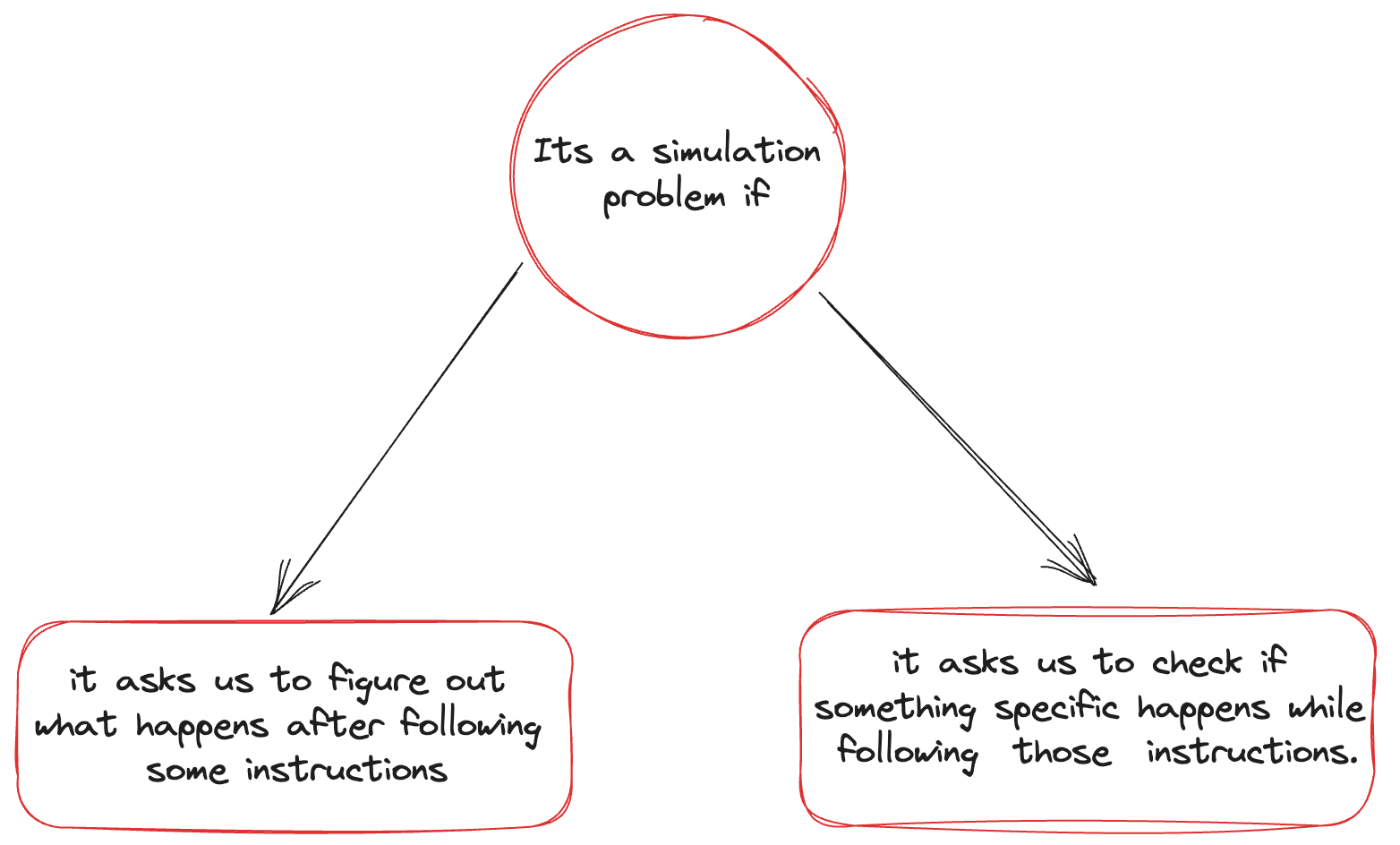Simulation Problems && How to solve them
What are Simulation Problems:
In competitive programming, we often come across what we call simulation problems. which are types of problems where the straightforward implementation of the given rules or directions is sufficient to find the solution. No need for complex algorithms or tricks; just execute the instructions as they are to get the answer. In the realm of CP. they’re used to assess one’s fluency in the programming language of choice. one would say all simulation problems can be rephrased to “Hi contestant can you translate these instructions into code ?”. Can you? yes, you !! try this one.
Alice and Bob are standing on a 2D plane. Alice starts at the point (0, 0), and Bob starts at the point (R, S) (1 ≤ R, S ≤ 1000). Every second, Alice moves M units to the right, and N units up. Every second, Bob moves P units to the left, and Q units down. (1 ≤ M, N, P, Q ≤ 10). Determine if Alice and Bob will ever meet (be at the same point at the same time), and if so, when
INPUT FORMAT:
The first line of the input contains R and S. The second line of the input contains M, N, P, and Q.
OUTPUT FORMAT:
Please output a single integer containing the number of seconds after the start at which Alice and Bob meet. If they never meet, please output −1.
We are given the initial positions and speeds of Alice and Bob. We want to know if they will ever meet at the same point at the same time, and if so, when. This look and smells and feels like a simulation problem. Why? We’re given a set of rules and tasked to know what’s the outcome of such rules after a certain number of steps (1000). So we can simulate their movements by using a loop that repeats 1000 times, or until they meet or go out of bounds. In each iteration of the loop, we update their positions based on their speeds and check if they are at the same point. If they are, we print the current time as the answer. If they are not, we continue the loop. If we finish the loop without finding an answer, we print -1 as the answer.
# Read R and S from input
# Set x1 = 0 and y1 = 0 (Alice's position)
# Set x2 = R and y2 = S (Bob's position)
# Read M, N, P and Q from input
# Set t = 0 (time)
# Start a loop that repeats 1000 times
# Update x1 by adding M to it
# Update y1 by adding N to it
# Update x2 by subtracting P from it
# Update y2 by subtracting Q from it
# Increment t by 1
# Check if x1 and x2 are equal and y1 and y2 are equal
# If yes, print t as the answer and exit the loop
# If no, continue the loop
# Check if x1 or y1 is greater than 1000 or x2 or y2 is less than 0
# If yes, print -1 as the answer and exit the loop
# If no, continue the loop
# End the loop
How to detect a simulation problem?
How can we recognize a simulation problem? There are two easy clues that can help you identify this type of problems:
